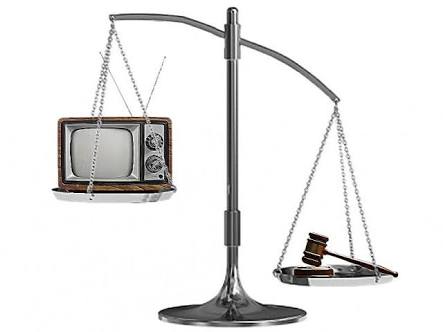In a democratic society governed by the rule of law, “presumption of innocence” is a cornerstone of criminal jurisprudence. It means that an accused person is considered innocent until proven guilty in a court of law. However, the rise of media trials, particularly in high-profile criminal cases, has begun to challenge this principle. In the age of 24/7 news coverage and social media frenzy, the line between public awareness and prejudicial reporting is often blurred, threatening the fairness of judicial processes.
The Principle of Presumption of Innocence
The presumption of innocence is enshrined in Article 11 of the Universal Declaration of Human Rights and is a fundamental principle of Indian criminal law. It places the burden of proof on the prosecution and ensures that no one is punished without a fair trial. The Indian Evidence Act, 1872, and Criminal Procedure Code (CrPC), 1973, implicitly uphold this doctrine by requiring the prosecution to establish guilt beyond a reasonable doubt. This principle protects individuals from wrongful convictions, abuse of state power, and public condemnation before the conclusion of legal proceedings.
What Are Media Trials?
Media trials refer to the extensive, often sensationalised coverage of criminal cases by television, print, and digital media, which tends to influence public opinion and, in some cases, the course of justice. While the media has a legitimate right to report and investigate, the problem arises when the media acts as judge, jury, and executioner, pronouncing guilt or innocence even before the courts do. Cases like the Aarushi Talwar murder case, Sushant Singh Rajput’s death, and Jessica Lal murder have seen intense media involvement, often resulting in public outcry, political pressure, and compromised investigations.
Legal Boundaries and Ethical Responsibilities
While freedom of speech and expression is guaranteed under Article 19(1)(a) of the Indian Constitution, it is subject to reasonable restrictions, including those protecting the integrity of judicial proceedings. Media must operate within the framework of contempt laws and the sub judice rule, which restricts public discussion of ongoing judicial matters that could prejudice the outcome. The Contempt of Courts Act, 1971, empowers courts to punish publications that scandalize or tend to scandalize the judiciary or interfere with the due course of justice. Despite these provisions, enforcement is weak, and media houses often ignore these boundaries, driven by competition and TRP ratings.
Impact of Media Trials on Justice Delivery
- Prejudicing the Public and Jury (where applicable): Media narratives can create public hostility against the accused, pressuring the judiciary or investigative agencies to act in accordance with public sentiment rather than law.
- Interference with Investigation: Leaking of case details, witness statements, or forensic reports may compromise the integrity of the investigation.
- Stigmatization of Accused and Victims: Media trials often lead to character assassination, particularly in cases involving celebrities or marginalized individuals, violating their dignity and privacy.
- Influence on Witnesses: Publicized versions of events can taint the memory or testimony of witnesses, whether consciously or subconsciously.
Judicial View on Media Trials
Indian courts have repeatedly voiced concern over media trials. In Sahara India Real Estate Corp. Ltd. v. SEBI (2012), the Supreme Court acknowledged the right of courts to pass postponement orders in sensitive trials to avoid media interference. Similarly, in Romila Thapar v. Union of India (2018), the court emphasized the importance of maintaining objectivity and not allowing media narratives to prejudice legal proceedings. However, courts have also been reluctant to impose blanket restrictions on media freedom, highlighting the need for balance.
Need for Regulation and Media Accountability
While self-regulation mechanisms like the Press Council of India and News Broadcasting & Digital Standards Authority (NBDSA) exist, they often lack enforcement teeth. What is needed is:
- Statutory Guidelines or Judicial Framework for reporting sub judice matters.
- Training of journalists on legal and ethical reporting.
- Greater court intervention in cases of prejudicial coverage.
- Awareness among the public to consume media critically, understanding that the law, not television anchors, delivers justice.
Conclusion
Presumption of innocence is not just a legal formality—it is a human right that safeguards liberty and justice. Media, as the fourth pillar of democracy, has the power to inform and expose injustice. However, when it oversteps into adjudication, it undermines due process and the fairness of trials. Striking a balance between media freedom and fair trial rights is essential to preserve both public interest and constitutional values.The judiciary, legislature, media, and civil society must come together to ensure that justice is not just done but seen to be done—by the courts, not by the cameras.
contributed by- Tulip Raghav (intern)

